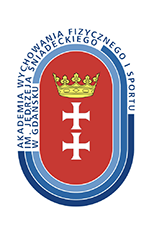Abstract
The aim of this study was to investigate and determine the impact of asymmetries in muscle strength and power between the right and left lower limbs on straight-line running speed in female soccer players.30 right-footed female soccer players playing in the Ekstraliga participated in the study. The Modulus. Number formula was used to avoid negative results and to assess only the difference in relative strength and power between the lower limbs, not the dominance of one of them. A result equal to or below the threshold defined group G1 "with lower asymmetry," and a result above the threshold defined group G2 "with greater asymmetry." It should be emphasized that the level of asymmetry in no way allows determining the strength and power results achieved by the players. Therefore, some players were classified into group G1 or G2 depending on the test. Analysis indicated no significant differences between groups G1 and G2 in straight-line speed (criterion: MVSLJ). The same analysis indicated higher speeds in G1 (criterion: LSLJ), meaning players with lower asymmetry in lower limb muscle strength were faster in straight-line running compared to those with higher asymmetry. The one-way ANOVA for running speed between groups G1 and G2 (criterion: PPLP) indicated statistically significant differences in running speed between groups over 20m and 30m segments. Players in the lower asymmetry group (G1) achieved higher speeds on straight-line segments of 20m and 30m. The one-way ANOVA for running speed between groups G1 and G2 (criterion: SLS) indicated statistically significant differences in running speed between groups over the 10m distance. Players in the lower asymmetry group (G1) achieved higher speeds over the 10m distance. In conclusion, this study highlights the significant impact of lower limb muscle strength and power asymmetry on straight-line running speed in female soccer players. The findings underscore the necessity for balanced muscle development to enhance performance and reduce injury risk. By addressing these asymmetries through targeted training interventions, coaches and trainers can help athletes achieve their full potential on the field.
Recommended Citation
Skalski DT, Pronczuk M, Łosinska K, Spieszny M, Kostrzewa M, Aschenbrenner P, Maszczyk A. The impact of asymmetry in lower limb muscle strength and power on straight-line running speed in female soccer play-ers. Balt J Health Phys Act. 2024;16(4):Article6. DOI: 10.29359/BJHPA.16.4.06
Author ORCID Identifier
Dariusz T. SKALSKI; ORCID 0000-0001-5128-7724
Magdalena PROŃCZUK; ORCID 0009-0005-1478-3151
Kinga ŁOSIŃSKA; ORCID 0009-0009-0227-106X
Michał SPIESZNY; ORCID 0000-0002-9934-6911
Maciej KOSTRZEWA; ORCID 0000-0003-2209-0839
Piotr ASCHENBRENNER; ORCID 0000-0003-1307-6621
Adam MASZCZYK; ORCID 0000-0001-9139-9747
Creative Commons License

This work is licensed under a Creative Commons Attribution-Noncommercial-No Derivative Works 4.0 License.
Included in
Health and Physical Education Commons, Sports Medicine Commons, Sports Sciences Commons, Sports Studies Commons



